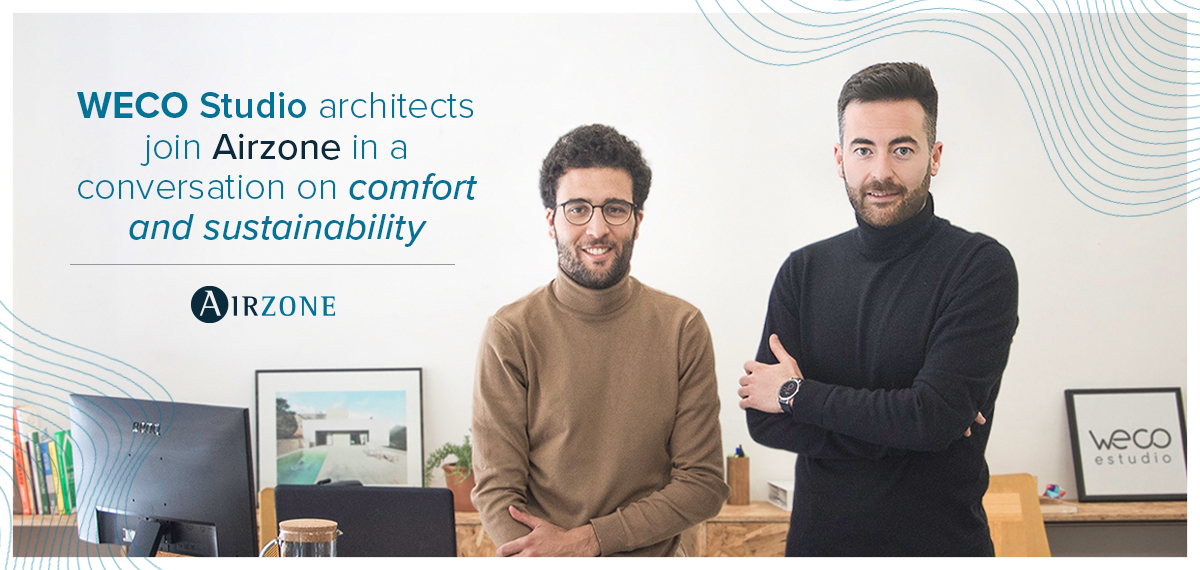


26 Aug 20

How to get a true comfortable home without giving up on energy savings?
Architects José Manuel Ruiz and Nacho Álvarez-Ossorio reveal the secrets to improving the quality of domestic life without harming the environment or wasting money
It has always been believed that to achieve good comfort in the home it is necessary to invest a lot of money. However, today's technology and the architects' way of designing have managed to adapt to the new demanding conditions more than expected, providing the user with the utmost comfort that, in many cases, also translate into important economic savings.
Comfort is becoming increasingly relevant. People want to feel comfortable in their homes, and architects are concerned with meeting this demand. This means that new houses can now benefit from better insulation to maintain the most ideal temperature year-round, and they tend to have new technological devices such as smart air conditioning units. All these additions make our domestic life a lot more comfortable and enjoyable.
Although there is a general tendency to associate comfort with greater cost, many experts in the sector, such as architects and engineers claim that pleasant conditions in our private space do not necessarily lead to waste of money or energy.
José Manuel Ruiz and Nacho Álvarez-Ossorio, founders of the WECO architecture studio and other specialists in HVAC installations and sustainability, state that 'comfort' and 'energy saving' must be considered as independent concepts. They add, associating greater comfort with high consumption is something of the past. The architects point out: "a great project is one that is responsible with the environment and at the same time takes care of the people who live in it".
How to bridge comfort and efficiency?
According to Álvarez-Ossorio, the most important element to ensure 'comfort' and 'efficiency' are well linked when building a new home is to consider two types of measures: "passive and active".
The passive measures are those that have to do with the design and the place where the building is located.
For a home or living space to be environmentally friendly without a big financial investment, we must aim, as the architect explains, "for a bioclimatic design. That is, the house must be designed taking into account the climate of the area it is located in and we should try to take advantage of the sun, wind, and even rain, as far as possible to save energy.
Similarly, it is important that the house is built with "a good insulation system". This is understood as the capacity of the construction elements of the home to prevent letting in either heat or cold from the outside in excess.
The active measures, on the other hand, correspond to the improvement systems that complement the construction. These components add to the comfort and allow the user to achieve a greater sensation of comfort.
These systems are, for example, the intelligent control devices that allow the regulation of air conditioning systems by zones while avoiding energy waste, or the water filters that accumulate raindrops.
Although these measures are important, architects remind us not to forget the role of users. Technology or good design provides individuals with spaces where they can enjoy a quality living environment, but it is the end user who must take advantage of all the resources available to them in the most efficient way possible.
Comfort and air conditioning
Without a doubt, one of the factors that most conditions the comfort of a space is its temperature. It is not possible to imagine a pleasant place where it is too cold or too hot. If this is the case, the well-being disappears.
Therefore, the architects Ruiz and Álvarez-Ossorio emphasize some elements to achieve the ideal temperature and sense of comfort, without renouncing the commitment to the environment and economic savings.
As Ruiz points out, "individual room thermostats are an optimal solution" to avoid compromising the values of efficiency and comfort. Ruiz says that, to comply with the provisions of the Spanish Regulation on Thermal Installations in Buildings (RITE), "thermal installations must have reduced energy consumption and, as a result, limited production of greenhouse gases."
According to Ruiz and Álvarez-Ossorio, comfort and responsible consumption can be perfectly combined. This is increasingly present in the construction sector. So much so that the latest update of the Spanish Technical Building Code (CTE), which is the regulation that governs the requirements a building must comply with in Spain, has made “an important leap" encouraging construction professionals to follow the example of the “Nearly Null Consumption Building” model.
However, the architects claim, there are still many details that can be improved so that new homes experience even greater savings. "Perhaps these improvements are planned for future revisions of the regulation."